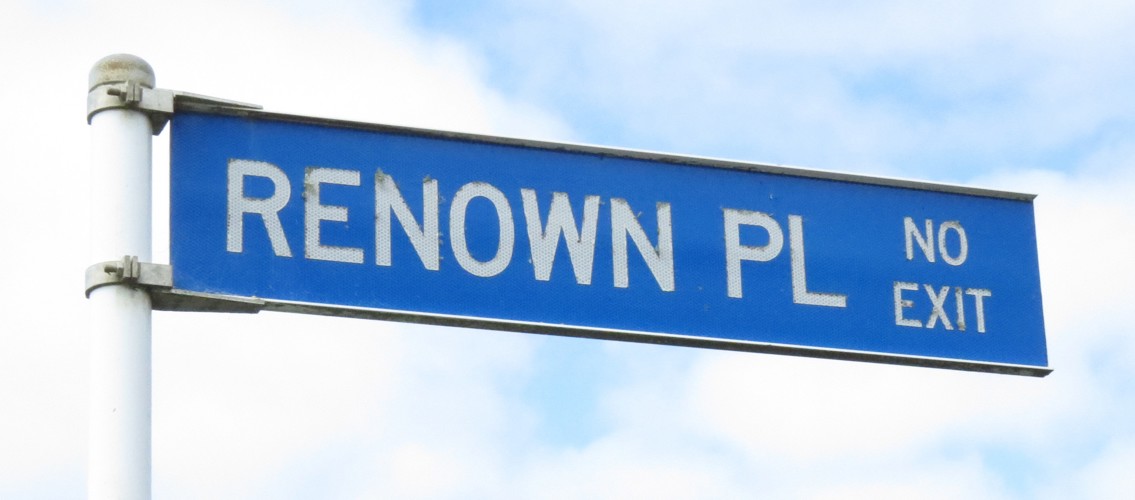 Renown Place sign (2019). Rachel Sonius. Word on the Street image collection.
Renown Place sign (2019). Rachel Sonius. Word on the Street image collection.
 Renown Place sign (2019). Rachel Sonius. Word on the Street image collection.
Renown Place sign (2019). Rachel Sonius. Word on the Street image collection.
Running off Norwich Avenue in Spotswood, Renown Place was named in 1971 after Renown Street in Plymouth, England.
The original street in Plymouth first appeared in a city directory in 1900. The suburb of Keyham where it is located was developed in the Victorian era to provide cheap housing for the thousands of workers employed at the nearby Devonport Royal Dockyard. Established in 1691, Devonport is the largest naval base in Western Europe, covering more than 650 acres. Over 300 ships were constructed there before shipbuilding ceased in the 1970s, and the site still employs 2500 people. It is now home to Britain’s amphibious fleet and estimated to generate around 10% of Plymouth’s annual income. Not surprisingly, many of Keyham’s streets have a nautical theme: Ocean Street, Fleet Street, Admiralty Street and Royal Navy Avenue.
Renown Street was named after a ship, although it is no longer clear exactly which one – at least eight Royal Navy vessels have borne the name over the centuries. The HMS Renown launched in 1798 used its 74 guns to attack French convoys and various Spanish ports. It was repaired in Plymouth in 1805 but eventually broken up thirty years later. The HMS Victoria was the first battleship powered by triple-expansion steam engines, and was intended to be called Renown, but then renamed in honour of Queen Victoria’s Golden Jubilee. Nicknamed ‘the slipper’, the ship sank off Lebanon on 22 June 1893 after colliding with another battleship, drowning 358 crew members. The HMS Empress of India completed in 1893 was also originally named Renown, but rechristened before her launch. Commissioned to defend the English Channel, she later served in the Mediterranean and around Ireland before being sunk as a target ship ahead of the First World War. The HMS Renown launched in 1895 is the last, and most likely, option for the inspiration of the street name. After a career spent sailing the West Indies and Mediterranean, as well as ferrying various royal couples on tours to India, the ship was sold for scrap in 1914.
This story was originally published in the Taranaki Daily News.
Please do not reproduce these images without permission from Puke Ariki.
Contact us for more information or you can order images online here.